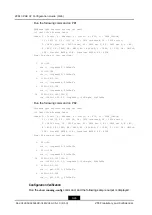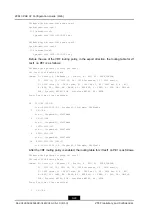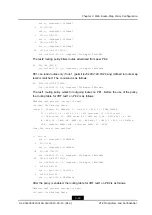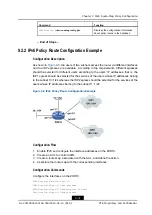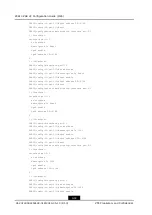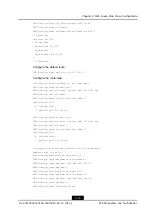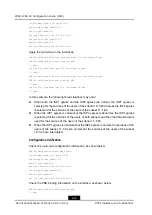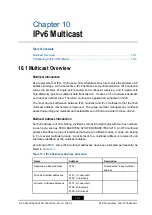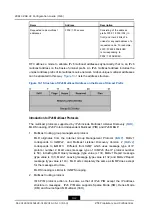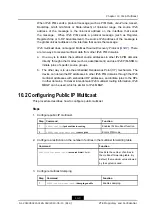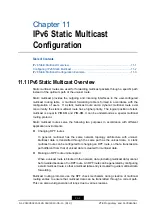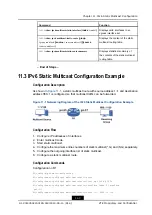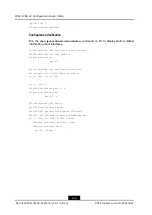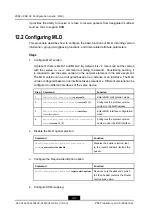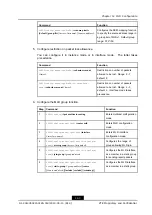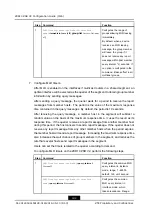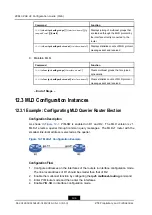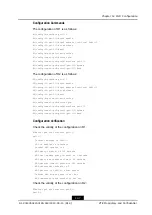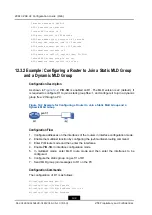
ZXR10 ZSR V2 Configuration Guide (IPv6)
Name
Address
Description
Requested node multicast
addresses
FF02::1:FFxx:xxxx
Consisting of the address
prefix FF02::1:FF00:/104 (in
front) and low 24 bits of a
unicast or anycast address of a
requested node. For example,
4307::01:800:200E:8C6C
is corresponding to
FF02::1:FF0E:8C6C.
RFC defines a mode to allocate IPv6 multicast addresses dynamically, that is, an IPv6
multicast address on the basis of unicast prefix. An IPv6 multicast address includes the
unicast address prefix of its multicast source network. Global-unique multicast addresses
can be allocated in this way.
lists the address structure.
Figure 10-1 Structure of IPv6 Multicast Address on the Basis of Unicast Prefix
Introduction to IPv6 Multicast Protocols
The multicast protocols supported by IPv6 include Multicast Listener Discovery (
MLD Snooping, IPv6 Protocol Independent Multicast (PIM) and IPv6 MBGP.
1.
Multicast routing group management protocol
MLD originates from the Internet Group Management Protocol (
). MLDv1
corresponds to IGMPv2, and Multicast Listener Discovery Version 2 (
corresponds to IGMPv3.
Different from IGMP which uses message type of IP
protocol number 2, MLD uses message type of ICMPv6 (the IP protocol number
is 58), including MLD Query message (type value is 130, MLDv1 Report message
(type value is 131), MLDv1 Leaving message (type value is 132) and MLDv2 Report
message (type value is 143). MLD acts completely the same as IGMP does except
for the message structure.
MLD Snooping is similar to IGMP Snooping.
2.
Multicast routing protocol
IPv6 PIM protocol action is the same as that of IPv4 PIM except the IP address
structure in messages. IPv6 PIM also supports Sparse Mode (SM), Dense Mode
(DM) and Source Specific Multicast (
).
10-2
SJ-20140504150128-018|2014-05-10 (R1.0)
ZTE Proprietary and Confidential



